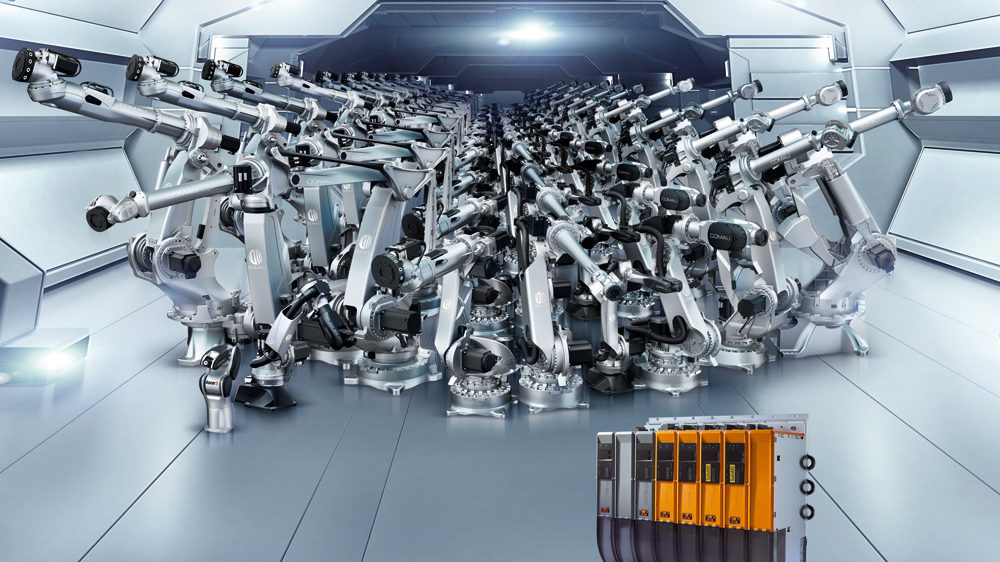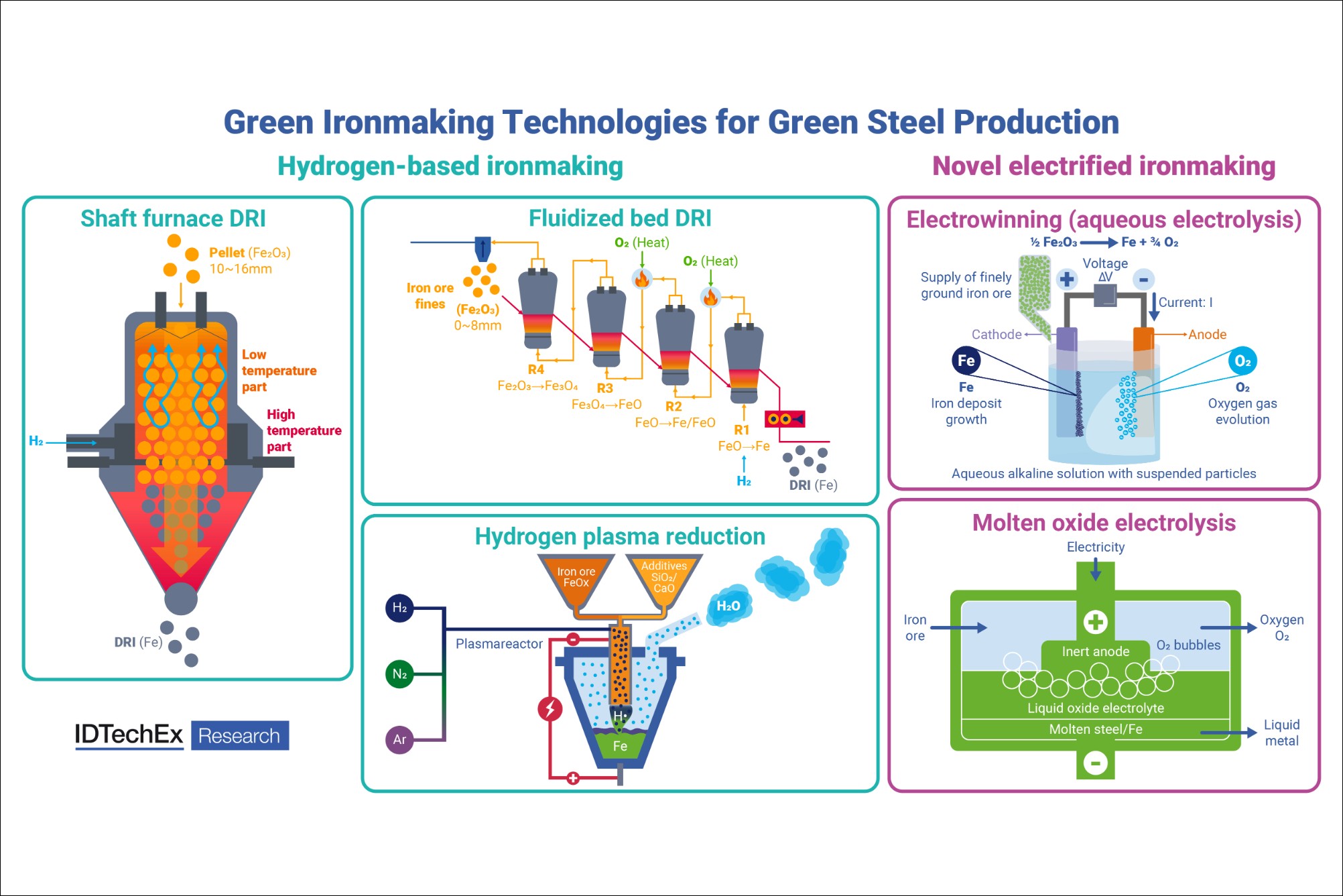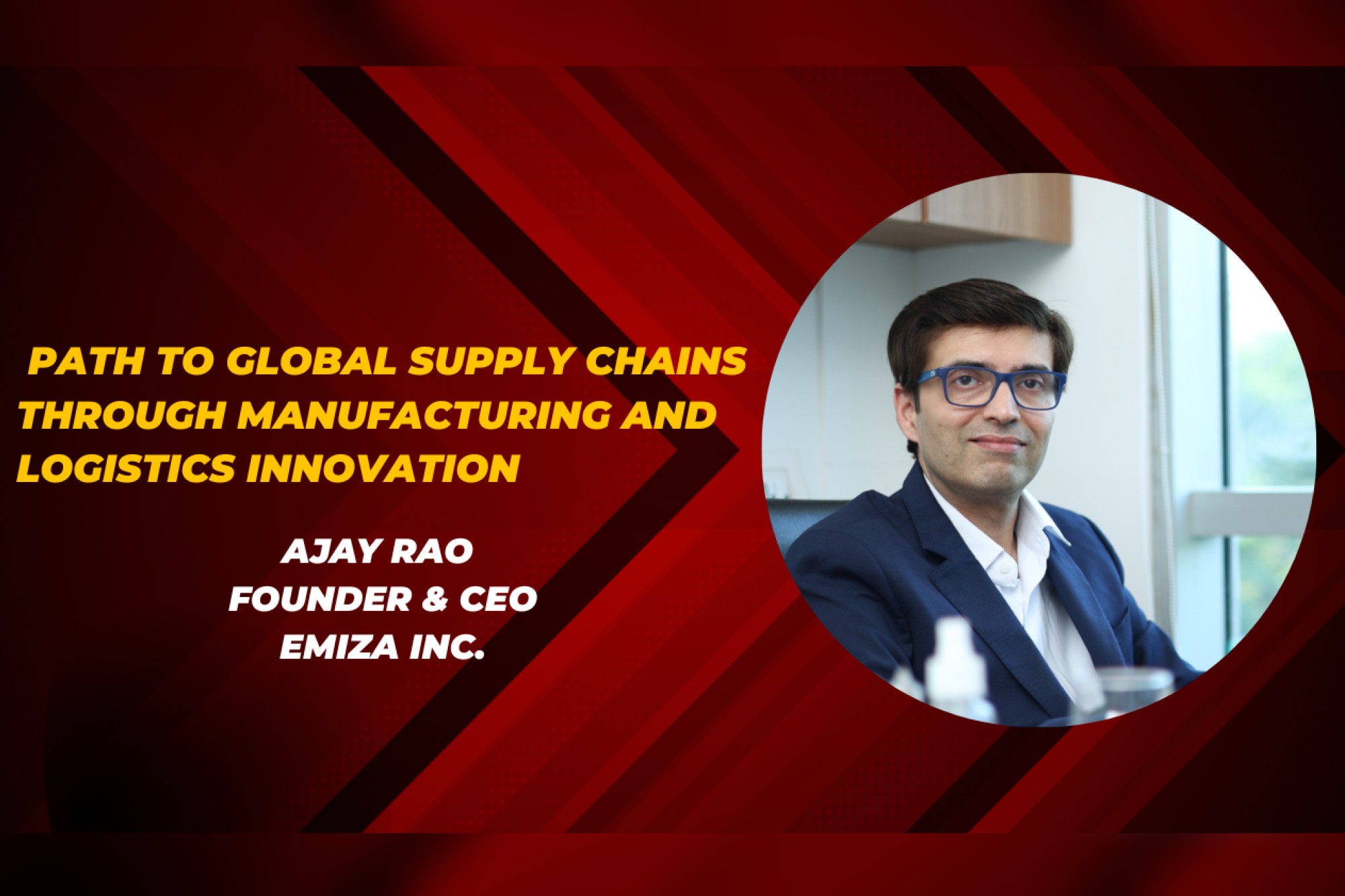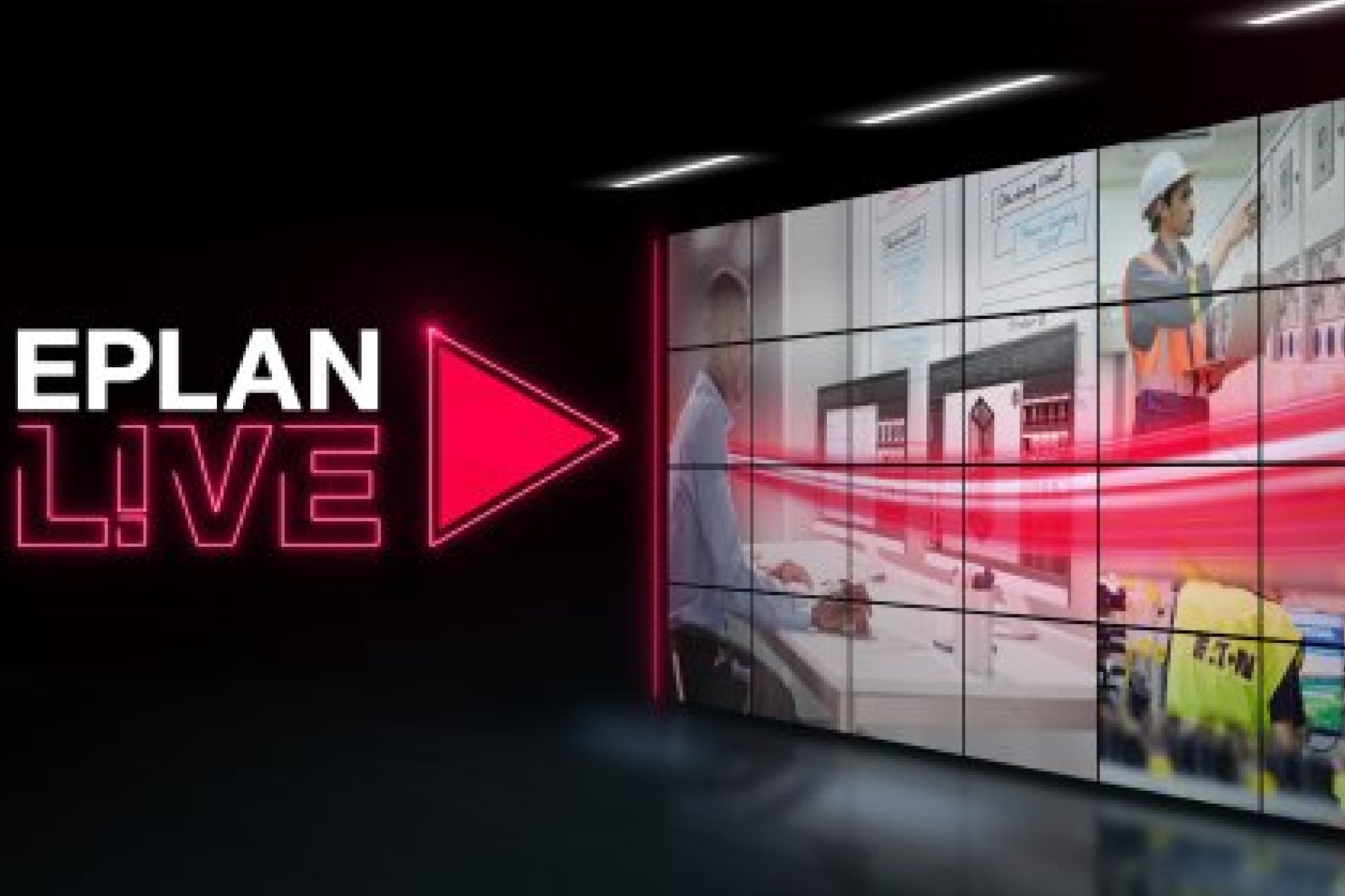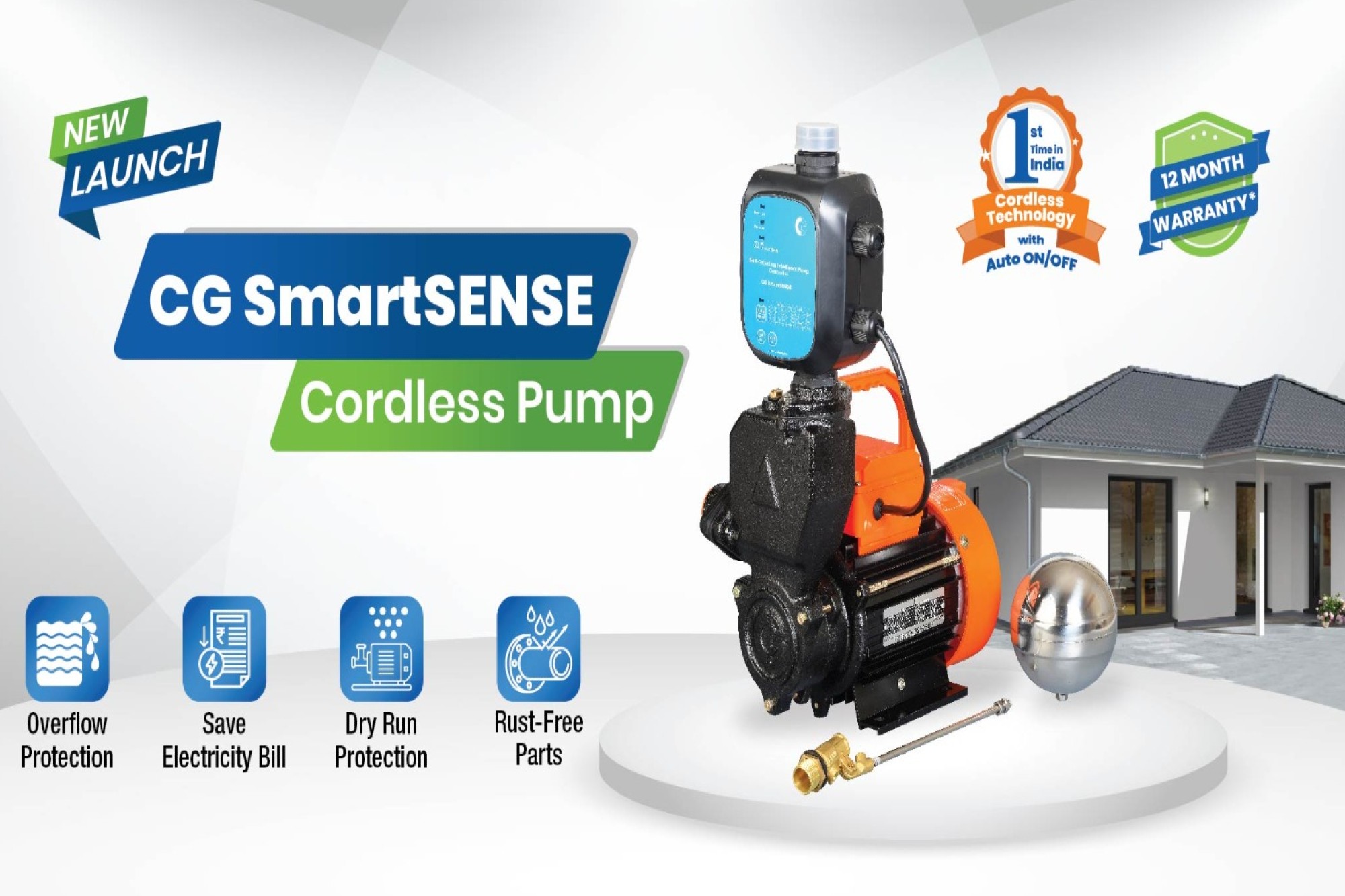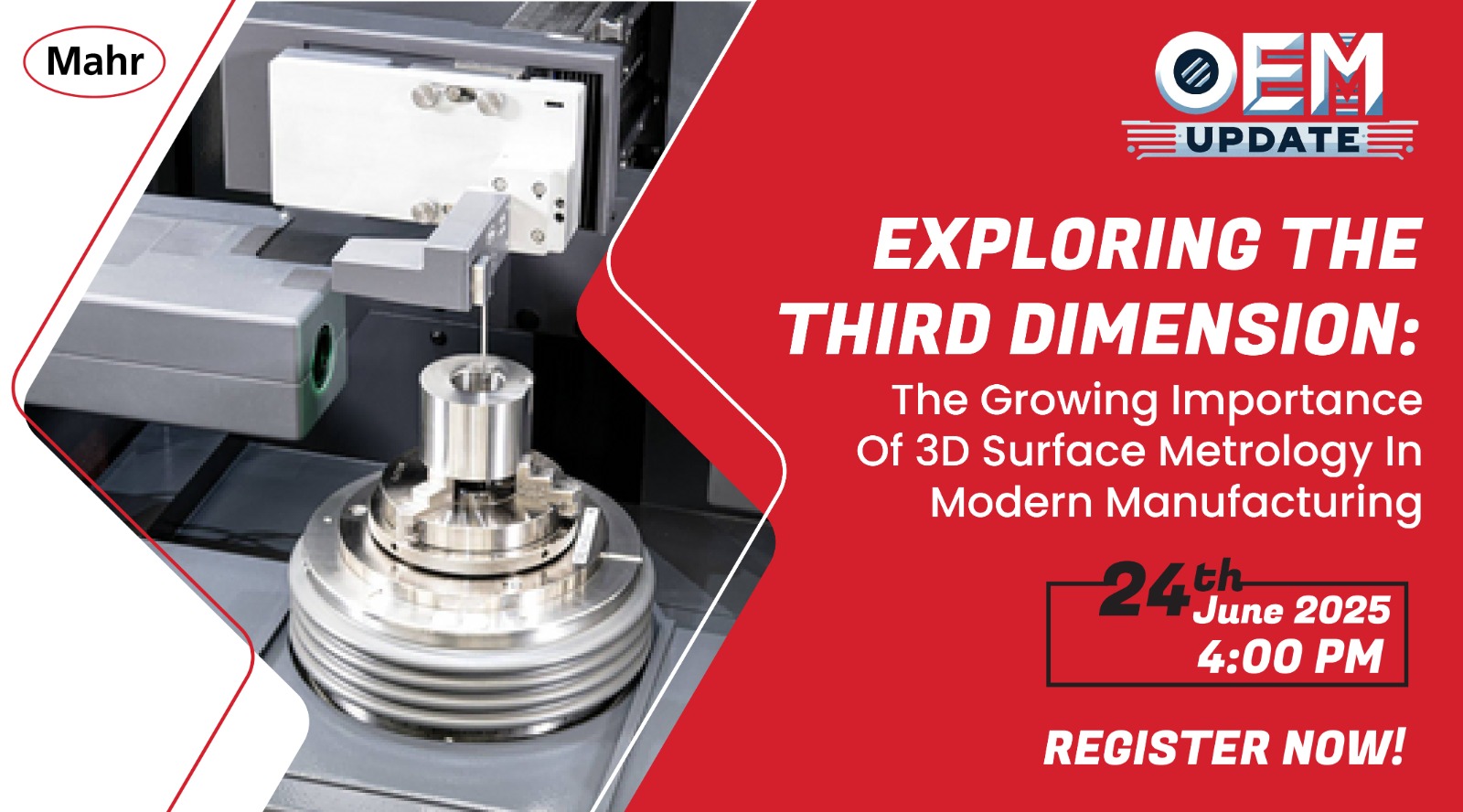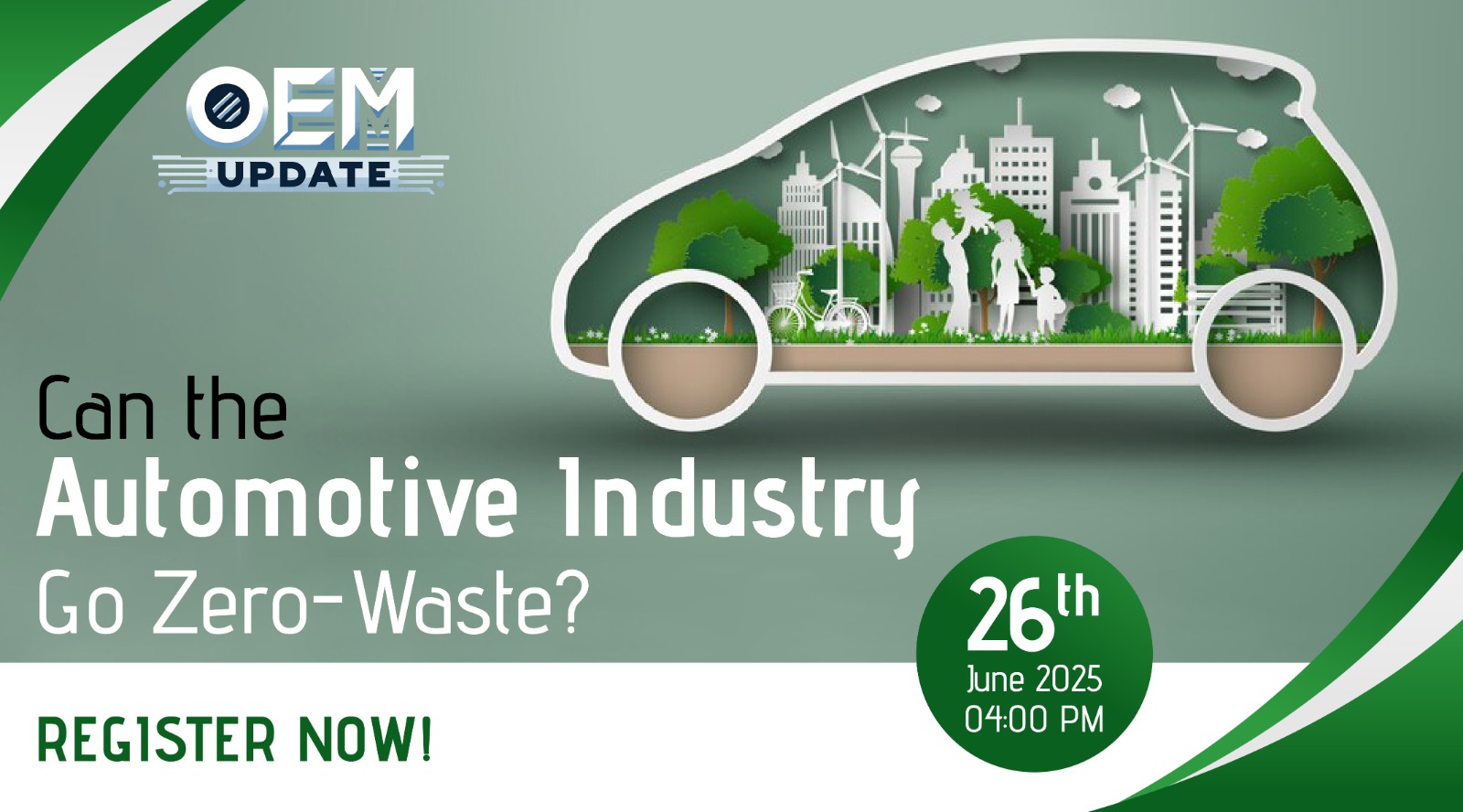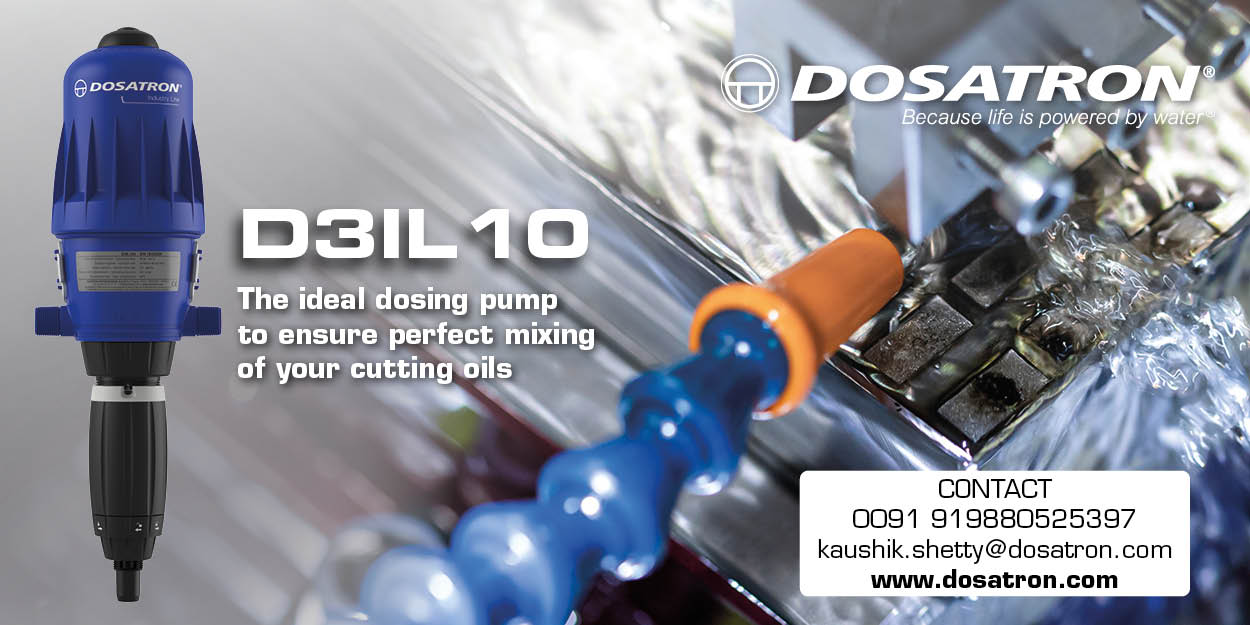Top Robotic Applications in Automotive Industry
By OEM Update Editorial March 13, 2018 4:06 pm IST
Discussing the key trends in robotic applications in the automotive industry:
Being the sunrise sector for the ‘Make in India’ campaign and one of the key sectors contributing towards the GDP of the country, the automotive manufacturing segment has been making rapid strides in the industrial automation domain emerging as a role model for the other industries by showcasing how automation should be utilised to scale up the value chain and achieve zero-defects manufacturing.
Traditionally, automotive industry has been an early adopter of robotics for application like welding, painting, glue dispensing, etc. However, there are plenty of robotic applications available to choose from within the industry; hence we take you through the latest key trends in robotic applications in the automotive industry.
Autonomous Intelligent Vehicles
Sameer Gandhi, MD, Omron Automation, India, says, “The new trend we’re witnessing is with respect to Autonomous Intelligent Vehicles (AIV) or mobile robots for material and intermediate goods transport. Robots are also emerging as one of the key parts of end-to-end traceability automation solutions. They no longer work as performing standalone tasks but as well integrated elements into the entire automation scheme for the shopfloor as a part of the smart automation architecture.”
He adds, “All these applications are not only making Indian manufacturers better makers to match global standards but also helping them immensely to create an advanced eco-system where they can trace and verify the quality, history, location, or application of all items in the supply chain by means of documented recorded identification.”
PLC based programmable automations machines
Nitin Wakode, Associate Vice President PSG, Onward Technologies Ltd, says, “Industrial robots practically speaking were evolved from the fixed automation systems on automotive lines which were expected to perform specific task i.e. spot welding or drilling etc. Special purpose machines, fixed automation and programmable automation did great job to support mass production era till 1990’s. PLC based programmable automations machines are still valid and widely accepted at many applications.”
Automotive industry is one of the major industry sectors which have accepted robotic application since 1960. Transportation and mobility has been in limelight since the development of motor vehicles. Demand for buyers has increased year-on-year and still continue. Especially in developing economies in Asia and country like India has seen golden days for automotive market in terms of demands.
Wakode explains, “Until last decade one might have seen one model of car or SUV will at least used to remain popular for 5 to 10 years. But now the competition is growing so rapidly that every manufacturer is launching few new models every year. If one ignore the market taste the sales number will go down as compared to others.”
In order to accommodate so many models in existing setup the only way is implementation of robotic applications. Robots are most adoptable machines to perform multiple task as well as similar task for multiple models.
Demand of collaborative robots is increasing
Most popular applications are arc welding, plasma cutting, laser cutting, BIW welding lines, palletizing, tending robots on press machines, CNC machines etc.
Wakode informs, “The recent trend is collaborative robots these robots are human friendly on assembly lines. Such robot has two arms and work with human collaboratively to get best from human and robot. Such robots are as good as portable robot which can be placed on worktables and human can seat next to it while working.”
One more important reason being smart factories getting ready for Industry 4.0. Robots are already integrated with the computer network and hence are part of equipment in network. However, with the new sensors and information sharing tools and applications robots can be a perfect role player in IoT based smart factory which is truly Industry 4.0 compliant.
Painting and handling – a major application
Ajay Gurjar, Dy. COO & Head (Business Operations), Yaskawa India Pvt Ltd (Robotic Division), says, “In automotive industry the concepts of smart factories and robotic factories are gaining significance, with some companies opting for complete robotisation in their automobile factories. In robotic factories, most work processes are controlled and operated by robots from start to finish, requiring humans only to oversee overall operations. As per application wise, current market for spot welding + handling over shading the arc welding requirement.”
He adds, “Other than arc and spot welding robot, painting and handling has become key application. In spite huge investment cost of painting automation customer is moving toward same due to quick ROI.”
A move towards new technology trends
Now automotive industry customer moving towards the new technology trends like compact robot and controller, higher communication speed, low spatter and high speed welding, human collaborative robot with industry 4.0.
Now with all application automobile company moving towards IoT. Growth in the IoT concept and technological advances has boosted the use of automated technologies in various industries. The high penetration rate of smart devices and use of wireless and cloud technologies will change the face and mode of operation of robots in the near future.
Robotic arms steadily increasing
Sameer Kelkar, CEO & R&D Head, Grind Master Machines Pvt Ltd, says, “Use of Industrial robotic arms are increasing exponentially in past couple of years. All major robot manufacturers celebrated order booking of over 500 robots in year 2017 in India. For many years the automotive industry has been well known for its intensive use of industrial robotics.”
Assembly lines – Flexible, efficient and precise systems
He adds, “Assembly lines in automotive industries demand efficient, flexible and precise systems. Robots for pick and place or handling, welding, sealing and painting applications are very common in automotive assembly lines.”
Kelkar explains the major trends in the automotive industry
• Integration of vision system is big step ahead in using robots for handling automation.
• Using vision sensors, robots can precisely locate parts like windshields, door panels and fenders.
• Painting is another major application where one can find many robots. It is a very complex process and toxic, as well as needing consistent results throughout the whole production. Since, highly qualified painters are hard to find these days and considering the size of a car, it is much easier for a company to use robots for this application. Another major benefit of using painting robots is reduction of wastage. Although large number of robots is populated on assembly lines, final assembly is still done by workers.
• Demand of collaborative robots is increasing as it is safe as well as helps in enhancing productivity.
Demand for automation solutions is growing
Pradeep Shoran, AGM-Marketing, KUKA Robotics India Pvt Ltd, says, “Industrial robots have been common place in the automotive industry for many years, especially in body-in-white production. Yet, the demand for automation solutions is growing constantly.”
He adds, “We currently see four major trends in the automotive industry which have an impact on robotics: As a result of ongoing globalisation, the cars of the future will be built where the customer is. Industry 4.0 is calling for factories to become versatile. Demographic changes are also having a significant impact on the future production concepts of automobile manufacturers.”
Shoran believes the issue of global warming means that the overall resource efficiency of the car as a product is becoming more and more important. The challenge here is the life cycle assessment, i.e. the CO2 emissions of a product from the cradle to the grave, starting with the production of raw materials, all the way through production and use right down to recycling.
Collaborative robots support operators
Dr. Andreas Wolf, Joint Managing Director, Bosch Ltd, India, says, “Industry 4.0 and advancements in technology have seeped into the current working mechanisms of the manufacturing sector globally. Robotics is one of the key outcomes and it is having a significant impact on the automotive industry.”
He adds, “Robotic solutions today are increasingly used to transform older systems that involve manual intervention and substitute them with machines that can perform the same tasks with more speed, efficiency and cost-effectiveness. Robotics introduction supports intelligent manufacturing with data acquisition, remote monitoring, breakdown alarm mails, predictive and easy maintenance.”
Recent trends of collaborative robots support operators working in sync with robots without safety guards. Bosch has also developed robots (APAS) with touch sensitive skin or force sensors, in other words co-bots.
These trends in the automotive industry are expansive if one considers that robotics can include Robotic Process Automation (RPA) to simplify routine tasks and Radio Frequency Identification (RFID) sensors to transform the functionality of the manufacturing line and the supply chain in the industry.
Human robot collaboration is the need of the hour
According to Ninad Deshpande, Head- Marketing, B&R Industrial Automation, Today, humans and robots have to work hand-in-hand increasing productivity and at the same time enhancing safety features. Nowadays, manufacturing units for assembly lines actively deploy these approaches, helping them to increase productivity, ensure safe operations and reduce machine footprint. This eventually gives rise to a lean manufacturing line with increased efficiency and safety.
Deshpande feels that human robot collaboration is the need of the hour and safe robotics plays a vital role in accomplishing these needs. Integrated and connected robots are too demanded by users in order to leverage new technologies and reduce costs.
In the context of the new Industrial revolution, OEMs and factories are turning towards open source architectures and moving away from proprietary solutions to handle the rapid and asynchronous new developments in fields like processors, connectivity, mechatronics, Artificial Intelligence and enhanced reality. Openness also forms the core of Industry 4.0 with robotics no longer a good to have, but a “must-have” in Indian manufacturing.
A new era
Spokesperson from ZF India, says, “Robotics is revolutionising production and ushering in a new era. The factories of the near future are evolving into ‘smart factories’, in which networked machines (robots) constantly talk to each other.”
Integrated measuring systems and sensors in the robots monitor assembly operations and the flow of materials. Cloud computing is used to host data in remote data centres and run software applications from centralised server farms.
Robotic applications is enabling manufacturers to respond to sudden changes in demand ever more rapidly – and even manufacture micro-batches of tailor-made products cost-efficiently. It will help the automotive industry in optimising production operations. Robotic applications will also facilitate automatic exchange of real-time data, which will be beneficial to companies.
ZF India’s spokesperson comments, “There are a few tasks in automotive manufacturing which are hazardous. Robots and robotic applications can prevent such risks to people working in a production facility. In assembly lines, robots keep workers from exposure to fumes from welding, weld flash and the noise of stamping presses.”
Latest robotic solutions in the automotive industry:
3DEXPERIENCE platform from Dassault Systèmes
Robotics and smart virtual factories – DELMIA digital manufacturing drives manufacturing innovation and efficiency by planning, simulating and modeling global production processes. DELMIA allows manufacturers to virtually experience entire factory production from the impact of design to determining how to meet global demand. With simulation manufacturers can better address and shift processes so as to quickly respond to the competition, or to take advantage of new market opportunities. DELMIA digital manufacturing capabilities extend visualisation beyond the product into manufacturing—providing the ability to simulate manufacturing processes before the physical plant or production line even exists. By proving out plant level considerations such as manufacturing approaches and material flow in the early stages of product development, the product concept can be analyzed to determine the best approach to make the product.
Robotics engineer
This solution simulates and validates industrial robot behaviour; it allows calculating interference zones and interlocks in multi-robot workcells.
Realistic Robot Simulation I (RRS-I)
Wakode informs, “Our solutions support the latest dual-arm robot models through the DELMIA robot library. To support Industry 4.0 it supports advanced logic and I/O in the simulation by allowing users to create input and output signals between robots and other devices it uses Realistic Robot Simulation I (RRS-I) for increased simulation accuracy. It supports almost all leading robots brands and even customised robots can be included.”
Today, simulation based solutions are key to success hence, the company is moving towards simulation driven design, digital factories, smart factories, Industry 4.0.
Yaskawa YRC1000 robot controller
To satisfy the current automotive industry requirement Yaskawa globally came up with new product like YRC1000 Controller with AR, GP and SP series robot for reducing the foot print of robot and controller. Yaskawa also launched new collaborative robot HC10 with can work together with human during the operation. Gurjar informs, “Yaskawa YRC1000 robot controller on industrial platform 4 to satisfy the market need of IoT with the help of Motoman Cockpit and Motoman Cloud software, with the help of these software customers can analyse and observe the robot remotely.”
Omron’s Autonomous Intelligent Vehicles
Omron continuously develops new products and solutions. One of the solutions on which the company is working with more and more manufacturers is the Autonomous Intelligent Vehicles (AIV). Gandhi claims, “We’ve one of the largest installed bases of AIVs that work as a fleet in a variety of manufacturing applications related to material movement. Some of the significant ones are: Tire Assembly – transporting green tire from intermediate storage to curing press stations; Automotive Electronics – transporting sub-assemblies from kitting to line side replenishment and Automotive Accessories – transport totes to and from injection molding stations and varied other welding applications.”
Total Traceability Sysmac and Robot based Quality Inspection Solution
Omron’s single-source, end-to-end ‘Total Traceability Sysmac and Robot based Quality Inspection Solution’ comprising of PLC, robot, vision and safety solutions not only inspects the quality but also captures images and stores these along with process parameters. Gandhi informs, “The solution has been showing exceptional performance in terms of timeliness, accuracy, reliability and productivity. Being designed on a single source platform, it also saves, significantly, the time while planning, commissioning and managing after-sales support.”
CO2 emissions – a greater focus
Shoran explains, “If the cars of the future are to be built where the customer is, then the robot manufacturers will also have to be based locally. A versatile factory requires mobile robotic systems, versatile logistics and the use of cloud services. Due to demographic changes, there will be a greater focus on assistance robotics and robots providing useful support to workers carrying out strenuous and non-ergonomic tasks. There will be a greater focus on CO2 emissions in the automotive industry. Around 30 per cent of the total CO2 emissions attributable to a car are currently accounted for by the production of raw materials and the manufacture of the car itself. Robot manufacturers, among others, are key to reducing these emission levels.”
KUKA LBR iiwa
Industry 4.0 is not simply a buzzword. KUKA is driving and shaping Industry 4.0. Turning ideal conceptions of the “smart factory” into reality is only possible with high-performance production systems that are efficient yet also flexible. KUKA already offers products that are ready for Industry 4.0. He further states, “These include mobile robotic systems with autonomous navigation software, as well as developments in the field of human-robot collaboration, such as the KUKA LBR iiwa, which is designed for direct collaboration between humans and robots and supports workers carrying out strenuous and unergonomic tasks.” KUKA places the greatest importance on internationally recognised, open standards in order to guarantee customers maximum interoperability. The flexibility of the smart factory as part of Industry 4.0 results primarily from the combination of IT technologies (in particular the cloud and big data) with classic automation technology – it can be called “Industry meets IT”. Networking of the individual Industry 4.0 components plays a central role here. Together with strong partners, the company will offer solutions based on a high-performance, standardised infrastructure.
Automation Studio: A single uniform programming tool
Deshpande informs, “Automation Studio the single powerful programming tool provides an extensive simulation environment together with an excellent integration with Maplesim, Matlab and E-PLAN softwares. This enables machine builders to program, simulate and commission not only robots available in the market from different vendors but also in-house developed robots irrespective of the number of axes.”
The future of automation lies in software. It is this automation software, which will drive business value. Recognising this, B&R has launched an absolute modern concept to develop machine software. mapp Technology is one such innovation in recent times, which enhances software functionality and reduces the development effort by 67 per cent. The company believes that programming is the thing of the past and a look at configuration as the new way of application development. mapp Technology is assisting robot integrations in standard controls reducing the time to market, enhancing diagnostics and providing complete integration. openROBOTICS has opened up new dimensions of robotics integration for machinery and production lines. With completely uniform programming for every component in the line – including robotics – B&R’s customers around the world gain full benefit of holistic approaches to operation, diagnostics and maintenance. openROBOTICS, provides an option for total integration with a possibility of a single controller from B&R for robot as well as machine control and programming. These systems run on open source, vendor independent, high-speed, real-time network Ethernet POWERLINK coupled with a fieldbus independent, open source, TÜV certified safety openSAFETY. B&R has already a successful implementation for a human robot collaboration application where the robot is not bounded by cage and works together with humans satisfying entire safety requirement.
Deployment of robotic in facilities
Use of RFID technology is essential
Bosch, as one of the frontrunners of innovation, actively infuses robotics and automation in the automotive industry across the worldwide production facilities. They call it as ‘Smart Automation’. The company has deployed robots where operations involving only loading or unloading was leading to operators fatigue and errors, for example, 5 machines assembly cell handled by a single robot and number of single machines applications at Bidadi plant.
At Nashik plant, Bosch has 3 complete machining lines with multiple robots and gantry systems. Wolf informs, “We are currently introducing low cost robots and collaborative robots in our assembly lines, considering the cost advantage and increase in productivity simultaneously.”
He adds, “As part of Industry 4.0, the use of RFID technology is essential to our success and production line. For example, we have introduced intelligent sensors and RFID technology that enable the availability of real-time analytical solutions that help operators closely examine the quality of products or components at all points of the supply chain. This boosts efficiency and reduces the risk of defective parts making their way to the consumer.”
Bosch also use an Overall Equipment Effectiveness (OEE) tracking method which is linked to smart phones in possession of line managers, so that they can react promptly in case of any deviations.
Robotic fettling automation technology
Kelkar informs, “Our expertise in CNC machine manufacturing along with in-depth knowledge of various machining and surface finishing process along with the zest to do something different helped us to develop Robotic fettling automation technology which eventually won us most innovative company award from CII.”
Foundry automation has literally revolutionised entire foundry industry. Today, many major foundries have deployed multiple robotic automation systems developed by Grind Master. Robotic machining or milling is another technology which is making headlines everywhere for many interesting applications like sculpting and pattern making. Using such system, it is now possible to make replicas of any 3D objects. Kelkar states, “With increasing number of robotic applications, many industries are facing shortage of skilled robotic engineers. Grind Master is on the mission to develop centre of excellence in robotics in association with various engineering institutes.”
Embracing megatrends in mobility solutions
Spokesperson from ZF India states, “Collaborative robots are one element of the radical restructuring that is already in full swing on shop floors in factories around the world. At ZF Group, we believe in embracing the megatrends in mobility solutions. Robots and robotic applications are increasingly becoming a part of ZF.”
YuMi, a small-parts assembly robot introduced in 2015 by ABB (ASEA Brown Boveri), which has a payload of 500 gms and, has been integrated into ZF‘s global assembly lines and has significantly, increased its productivity. Both arms of ABB’s robot YuMi are padded, with its sophisticated system of sensors it can also “see” and “feel”, enabling it to avoid collisions with its human co-workers. It is also capable of performing complex assembly routines with high precision.
The new trend we’re witnessing is with respect to Autonomous Intelligent Vehicles (AIV) or mobile robots for material and intermediate goods transport.
Sameer Gandhi,
MD, Omron Automation, India
PLC based programmable automations machines are still valid and widely accepted at many applications.
Nitin Wakode,
AVP PSG, Onward Technologies Ltd
Other than arc and spot welding robot, painting and handling has become key application.
Ajay Gurjar,
Dy. COO & Head (Business Operations), Yaskawa India Pvt Ltd (Robotic Division)
Assembly lines in automotive industries demand efficient, flexible and precise systems.
Sameer Kelkar,
CEO & R&D Head, Grind Master Machines
KUKA LBR iiwa, which is designed for direct collaboration between humans and robots and supports workers carrying out strenuous and unergonomic tasks.
Pradeep Shoran,
AGM-Marketing, KUKA Robotics India
Recent trends of collaborative robots support operators working in sync with robots without safety guards.
Dr. Andreas Wolf,
Joint Managing Director, Bosch Ltd
Automation Studio the single powerful programming tool provides an extensive simulation environment.
Ninad Deshpande,
Head- Marketing, B&R Industrial Automation
Cookie Consent
We use cookies to personalize your experience. By continuing to visit this website you agree to our Terms & Conditions, Privacy Policy and Cookie Policy.



